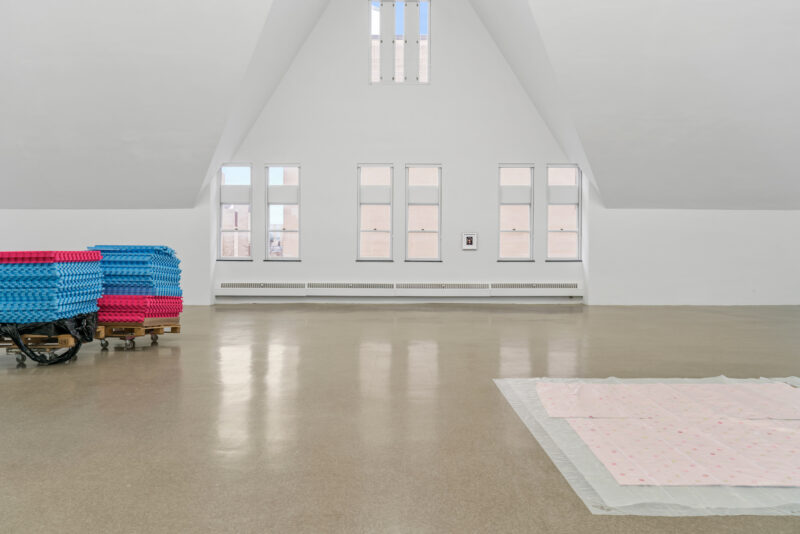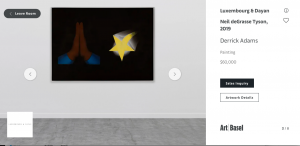The exhibition space is bare. White walls and concrete floors, regimented columns and weepy skylights. Skylights that clatter and pour; that effuse sound and light, beams becoming all thick and otherwise architectural. The exhibition space is bright, white, a beating body system beneath an urbanising avenue. This exhibition space lulls with the most gentle of agential gestures.
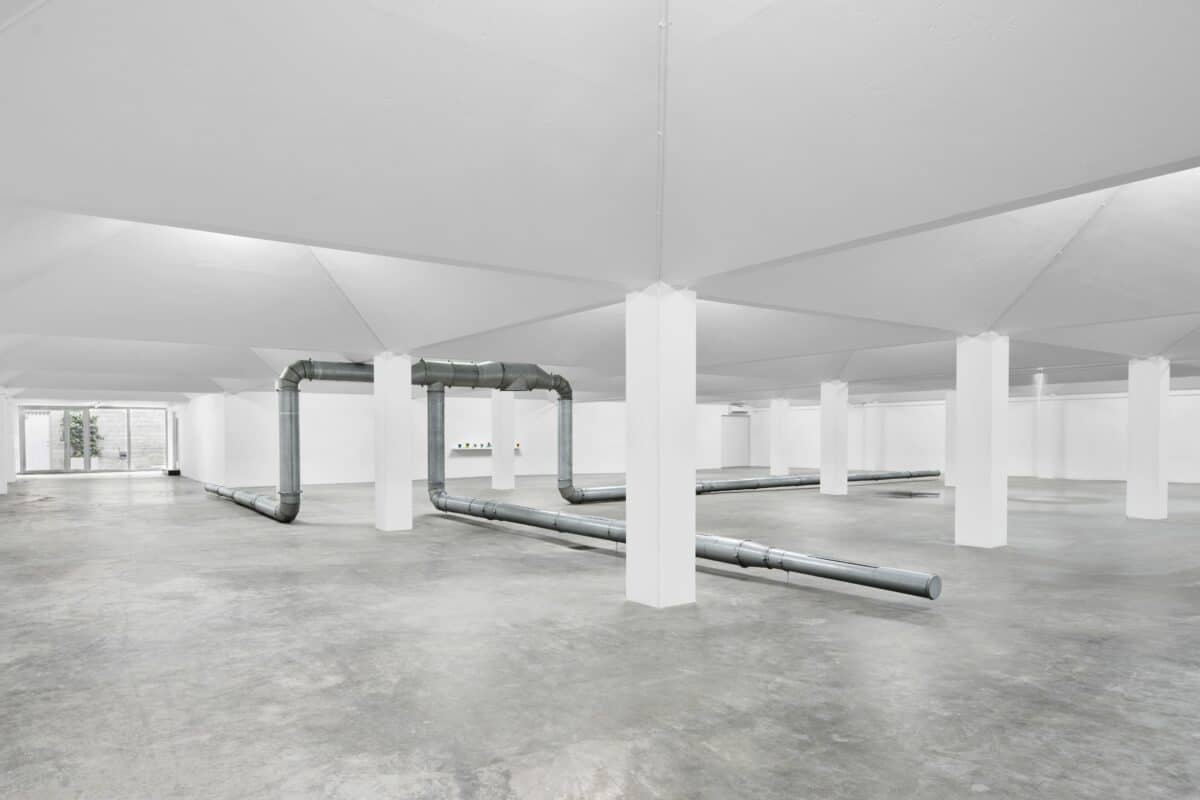
Five ‘scores’ compose Ghislaine Leung’s solo exhibition Fountains at Simian (Copenhagen, February 24 – April 15, 2023). Materialised, or rather performed here, as sculptural forms, these short text compositions have each been corralled from Leung’s artistic repertoire—dating from 2018 to 2022, and from disparate exhibition sites. In Fountains, these scores play out as an enmeshed ensemble, each and all alluding to the possibilities of life—being and living, working and serving, human togetherness and the tissuey relations between bodies—so often foreclosed by tightly wrought circulatory systems that privilege streamline production, isolated product, and the perfectly individuated, quantifiable, labour-body.
This is not the place to discuss the art-historical importance I see in Leung’s practice—that is a joy for another time—but, as a prelude, it is worth noting that the ‘scores’ that form this exhibition are defined as short written instructions which set the conditions for each work’s production and (re)presentation. As with musical compositions, these artworks-as-scores focus on what each artwork’s material parts are—the individual notes, as it were—and how they can come together with and in a space—how these notes are to be performed by a musician (or by a gallery in this case). For Leung, scores are invitations to perform and as directional conditions, these gestures expose the interdependencies that exist between bodies in circulatory systems—here, the interdependencies that exist between the artist and the gallery, the gallery and its socio-cultural context, artwork and its very being. As acts of refrain—dissonant and suspending—Leung’s scores open up otherwise closed circuits, making these vulnerable, and in turn, transforming streamlined systems of individuation into tentative, bodily, spaces for commune. Each of the works that comprise Fountains accentuates this space of interdependency, laying these out in what I believe to be wonderfully hope-filled gestures.
The score that literally welcomes me and the other visitors into Simian’s gallery space, Violets 2 (2018), is writ as follows:
Score: All pipes [from the ventilation system of the Netwerk Aalst Bar] removed for refurbishment reinstalled within the space of one exhibition and fixed from the floor using as much of the material as possible while keeping it all interconnected [sic]. Spare pieces that do not fit in this configuration are to be bracketed together in smaller formations. A welcome sign to be installed [sic].
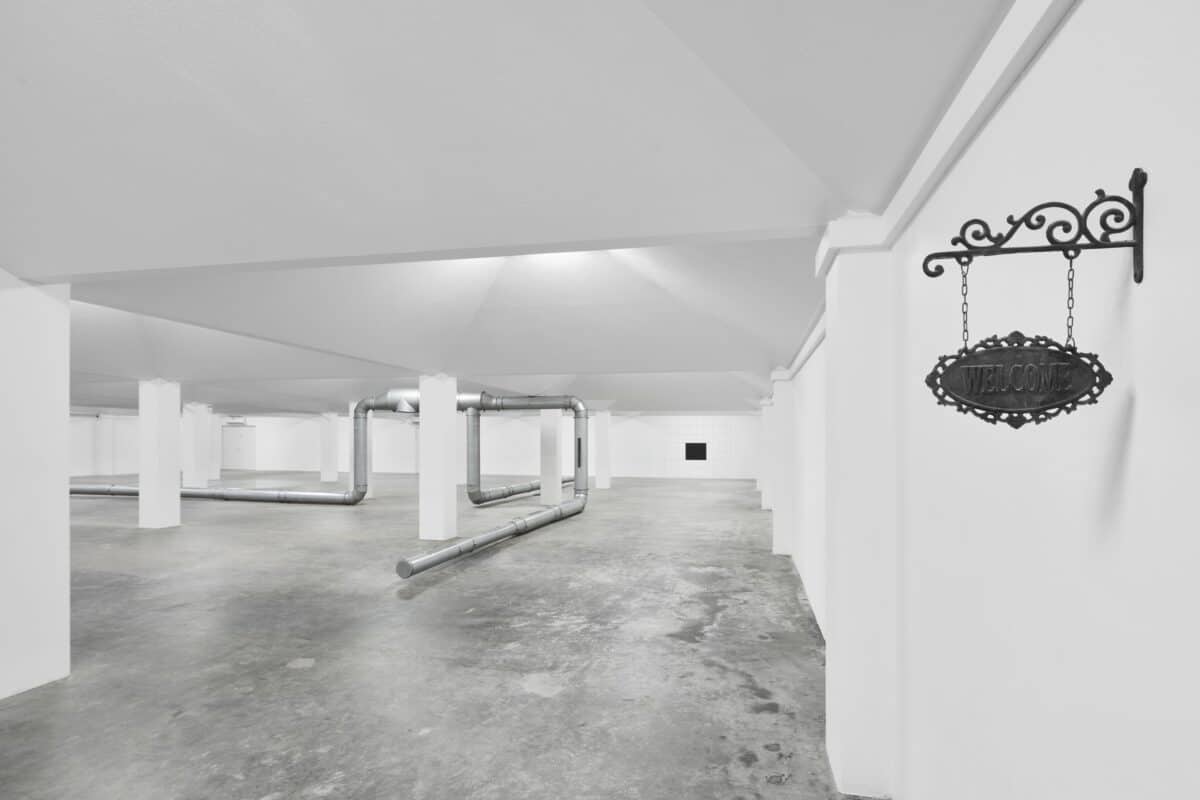
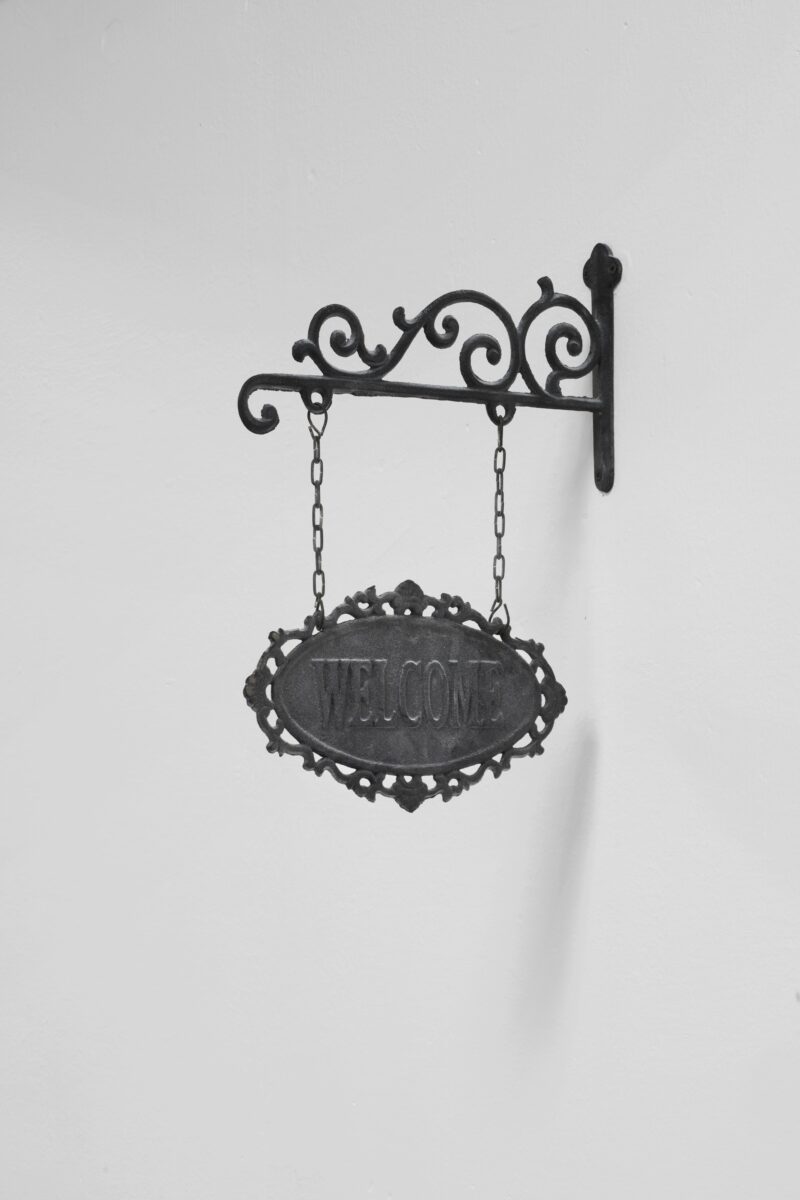
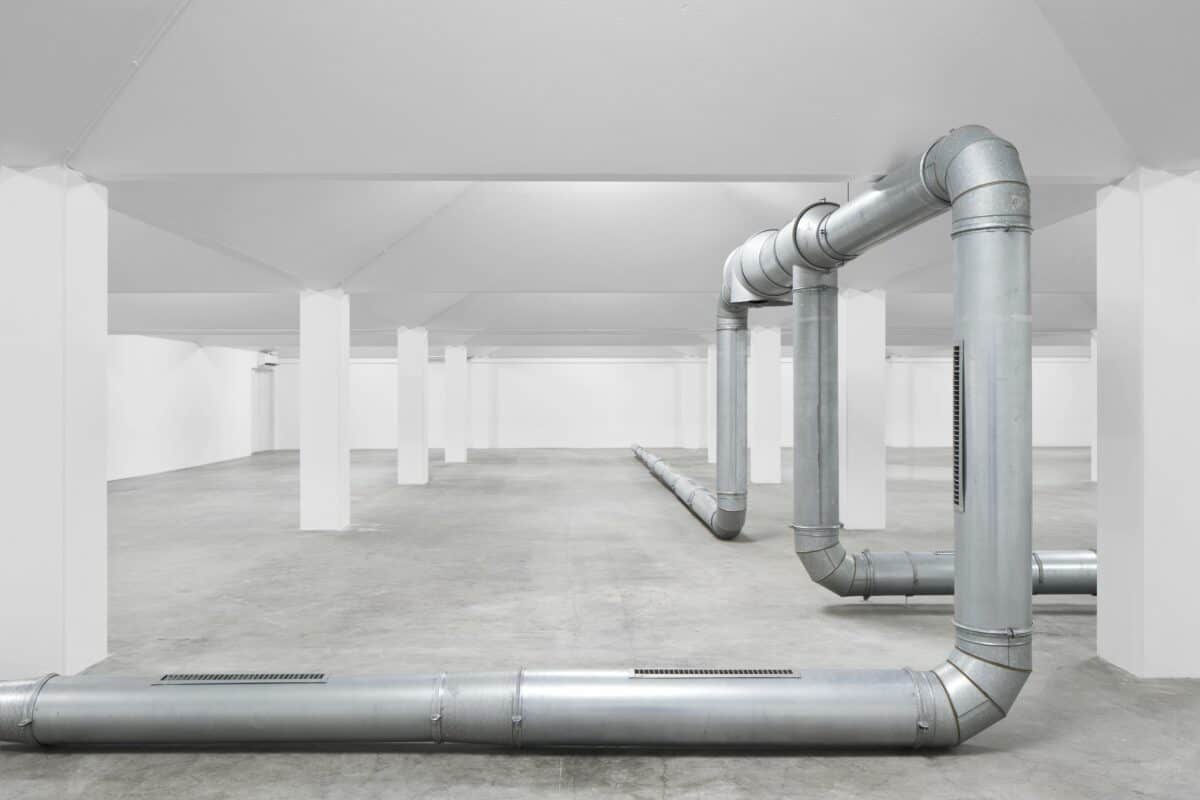
At Simian, these displaced pipes tangle through the centre of the bare white space. Like bones or bodily vessels, each blotchy-steel limb angelically demarcates an area of the gallery, creating little airy chambers in which each of the other scores in the exhibition are situated. For Leung, whose practice is rooted in writing, the score’s title, Violets, is something of a phonic riff on violence; pertaining, perhaps, to the often violent nature of refurbishment and redevelopment in our neoliberal, urbanising, age—the work’s materialities, ventilation piping removed on the occasion of the renovation of the Netwerk Aalst Bar in 2017, is a further allusion to this. As a gesture, this connotation also directly sites the physical location of Simian’s gallery space. Situated within the old bike storage for Ørestad metro and railway station, the gallery lies adjacent to Field, one of Scandinavia’s largest department stores, 178,000 square metres of almost faceless consumerism, a development that is encroaching upon the endangered wildlife found in the Grønjordssøen nature reserve which lies in the view of steely Field.
One could read Violets 2 as something almost site-specific. This reading would, however, risk overlooking the wider contextual contingencies—the interconnected acts of violence—that perfume the score’s being. Throughout her practice, Leung questions these interconnections and specifically the sociopolitical conditions that govern modes of circulation, be these modes of art production and (re)presentation or, as I see, modes of social life. For Leung, it appears that a site-specific focus diverts one’s critical attention away from the nodes that constitute these closed systems, directing attention away from how these systems operate upon different bodies across spaces, and further, away from a practice of critique that can make these bounded operations perform differently. By working through indefinite text-based scores, Leung’s works are able to circulate through and across systems; and with each instance of their performance, these ‘context-contingent’ artworks are able to expose something of the fleshy interdependencies that are often lost or overlooked when critique is fixed to a singular place. Further, as they materialise in different contexts, Leung’s works afford an opportunity to witness how acts of violence—here, following my reading, neoliberal acts of ecological defacement—suffuse our common world-system, and, in doing so, providing a welcome opportunity to come together in new, changeable, formations, to trouble the modes of circulation that sever the tissuey relations between agential bodies.

Meandering through the silver-lined chambers, demarcated by the steel limbs of Violets 2, Leung’s score Hours (2022) holds me transfixed. A simple wall painting—something echoing Agnes Martin’s bare canvases—this minimal black and white composition is formed from 168 brick-like rectangles, arranged in a 24 by 7 grid. Sitting central, hovering just below the painting’s midpoint, a neat black square becomes the primary protagonist of this painted score. As with Violets 2, the textual foundation for Hours opens out the materialities of the work, providing a number of references through which one can attune to that critical line vibrating beneath the score’s surface. Painted to match the size of Leung’s home studio wall, the sparse grid is an hour by hour breakdown of the calendar week. And that black void, that central square, the portion of the week Leung is able to devote to studio time (Thursday 9am – 4pm and Friday 9am – 4pm). The other bare brick outlines in the composition represent the hours where Leung is ‘merely’ living—taking care of her child and family, thinking, sleeping, etc.—in other words, the immaterial hours of non-productivity. First performed as part of her solo exhibition Balances at Essex Street gallery in New York (September 8 – October 15, 2022), Hours can be seen as a portrait of the artist, her practice and artistic labour, indeed perhaps her very being—given the logic of neoliberal existence, where our careers become a, if not the, key anchor in our corporeal existence.
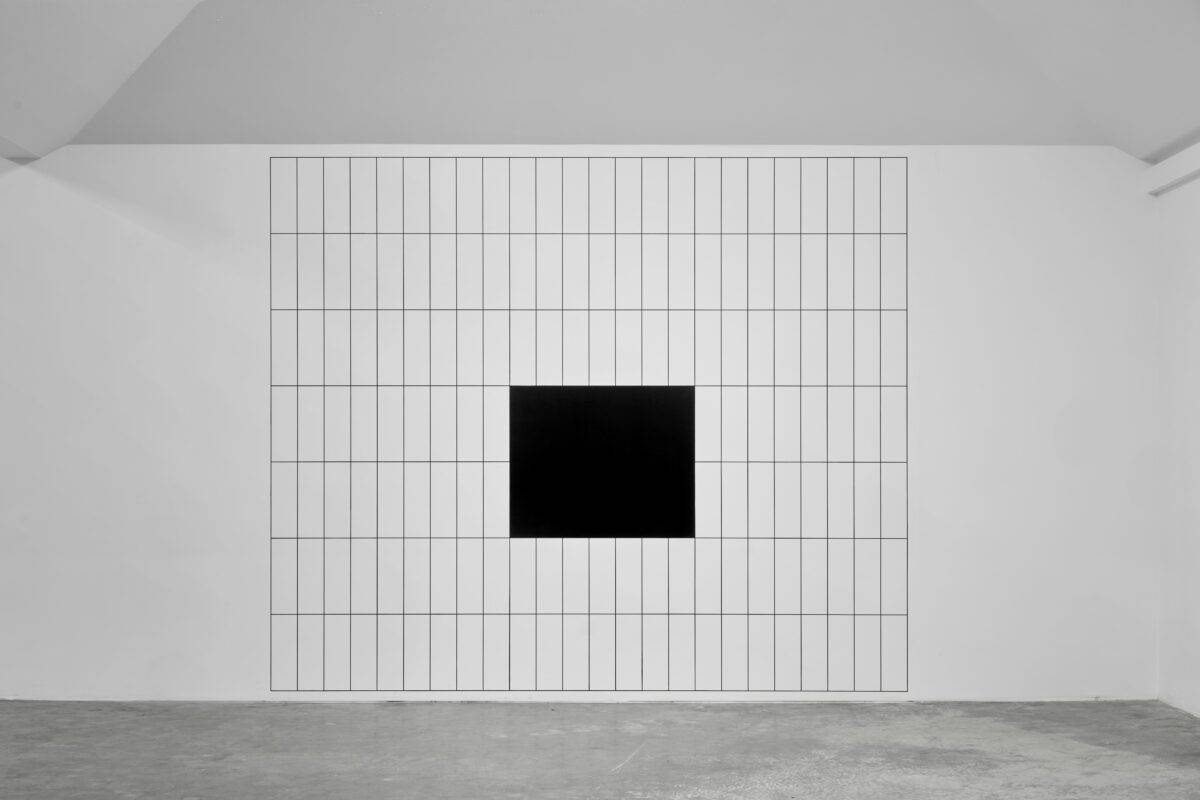
More than a statement on different forms of labour and how they are valued in our existential world-system, Hours fundamentally entangles the body of the artist with that of the gallery, and further with all those other bodies that intersect with and in this microcosm, making the particulates and interdependencies that exist between these entities all extra-sensorial: felt. Sitting before Leung’s labour life in its grained grid form, my breathing stops as I notice a stream of light pour through one of Simian’s skylights and slowly trudge across the blank brick outlines in the top half of the painted portrait score. This serendipitous entanglement, not only illuminates the nothing hours of the score but makes my mind flicker and think about all that life that is happening beyond the box of the gallery; indeed, all that life that happens beyond the void of material or valued labour time. Lulling with that ray of light, thinkings flashing in my mind, I become aware of the faint hum of the Metro line, the warm kiss of the gallery’s heating system on my skin, I become aware of the clicks, the tip taps, the clatter clap that sound from the feet of other visitors as they move about the space. I become aware of all the bare details that constitute my being here, indeed my being. Much like the installation of the scores in the exhibition, the bare spaces of Hours are not empty, not barren; no. Rather these non-valued spaces are filled, overflowing perhaps, with the sensorial possibilities, those held within everyday life—being, living, working, serving—and in this way, I see them, in an overly romantic light, as little vessels freed from the synaptic grasp of vapid economic enclosures; or at least as spaces that frame to the possibilities found in the everyday.

Something of this hope-filled space of the overlooked everyday bleeds into the exhibition space through the artwork Fountains (2022). As its constituting score suggests, the work is literally ‘a fountain installed in the exhibition space to cancel sound.’ A magnificent gesture, the score materialises here by way of a pump that draws water from the urban pool above the gallery allowing this architectural stream to pour into Simian’s space from one of the square-cut skylights. Flowing through two pipes the impending waterfall gushes from this light opening as a glinting cascade, its two streams touching mid-pour as they descend to the concrete floor of the gallery with a clattering splash. As something of a sublime meeting of running fingers, this white water’s fall brings to my mind the dainty reach pictured in Michelangelo’s The Creation of Adam (c.1512). Following this analogy, Fountains appears to operate as a gesture reiterating the life giving force of the bare everyday. That is, the life giving power found when one opens up closed systems and allows the clammer crash, tissuey touch, of a non-valued agent to fill and flood and effuse tight enclosures.
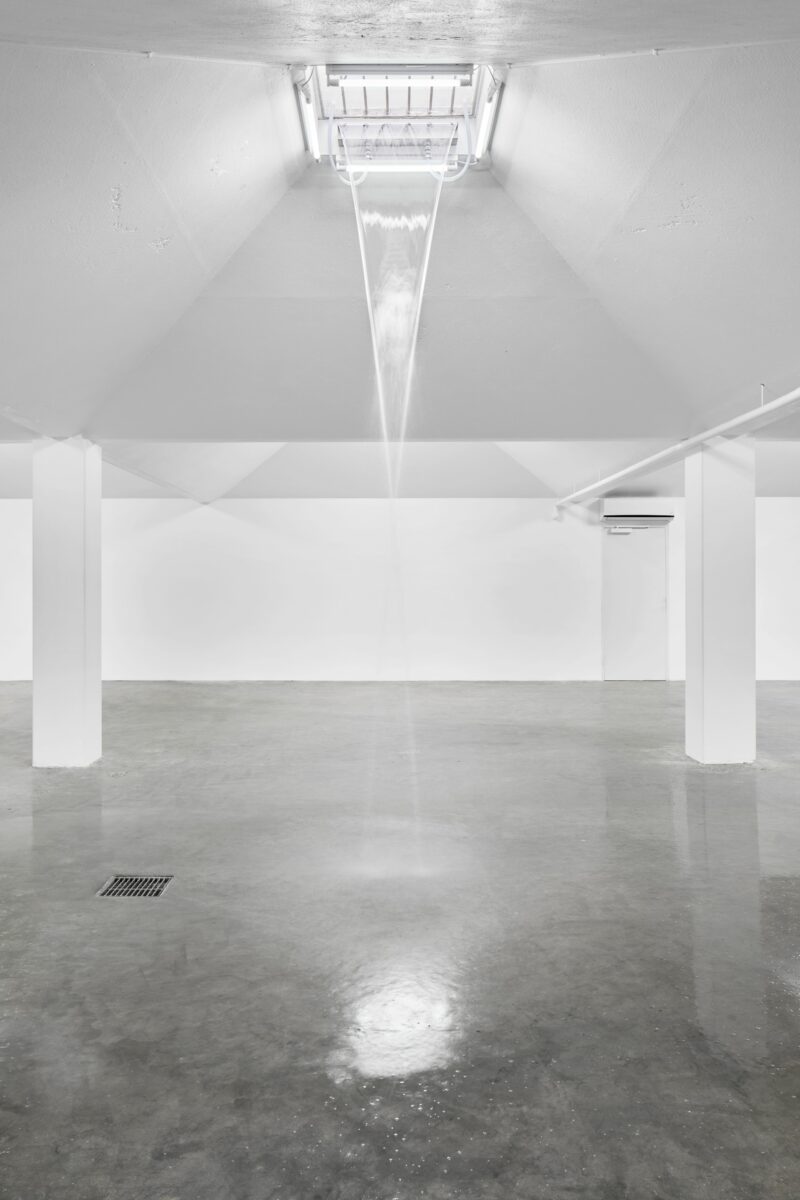
Ghislaine Leung, Fountains, Simian, Copenhagen – April 15th, 2023 ssiimmiiaann.org
With thanks to The Danish Arts Foundation
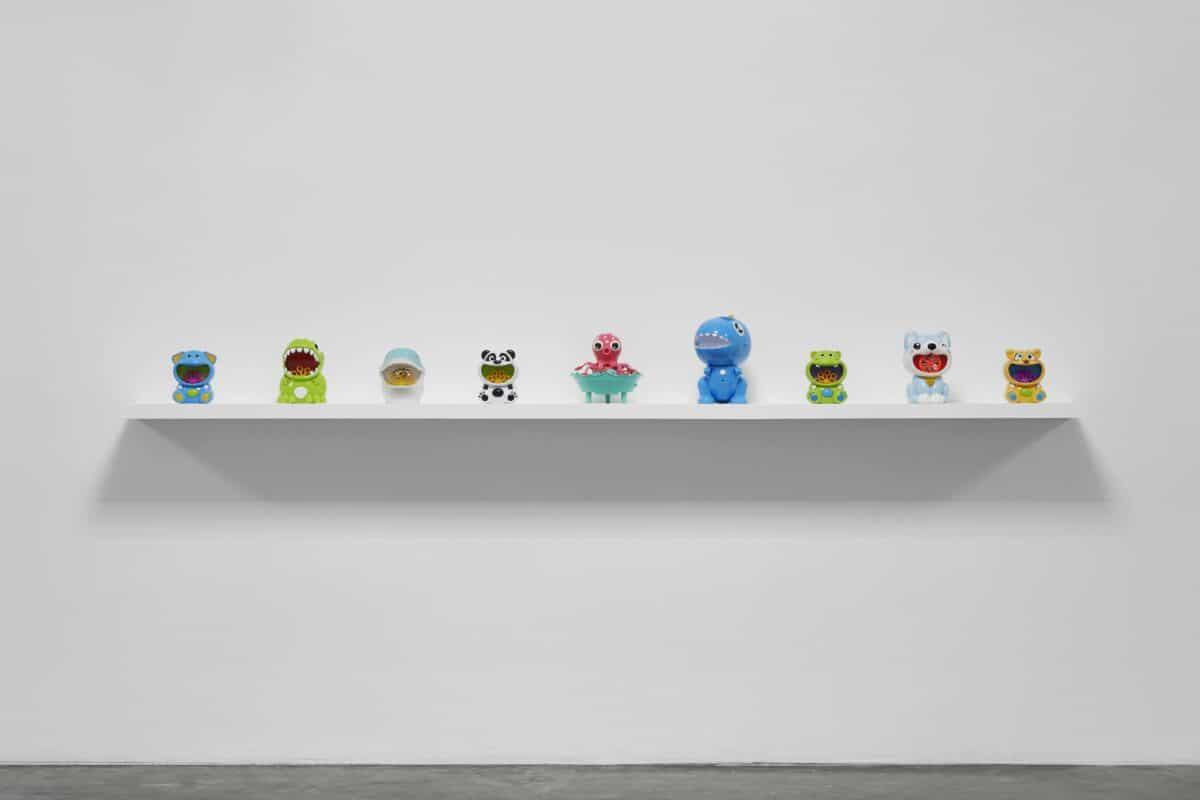
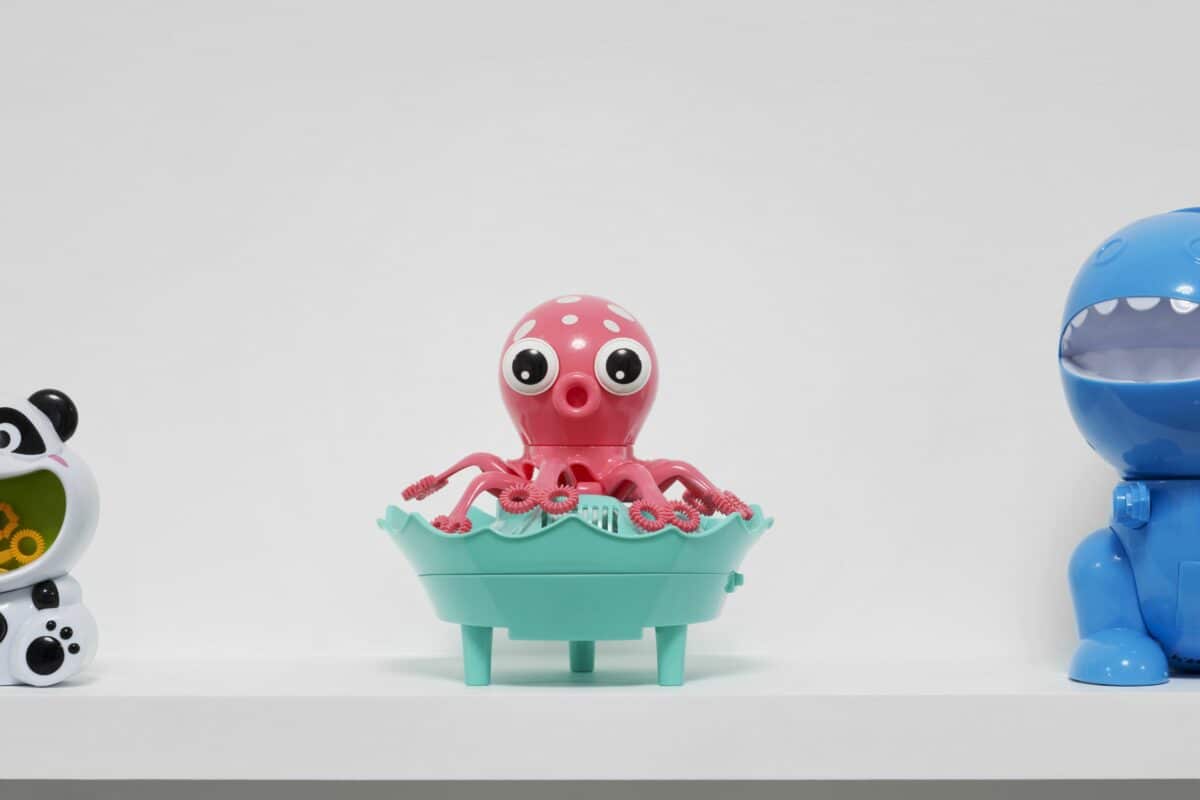
About the artist
Ghislaine Leung (born 1980 in Stockholm, Sweden) is a British artist whose work often take a critical look at the sociopolitical and spatial conditions of art production and (re)presentation. Solo shows have been dedicated to her practice at Maxwell Graham/Essex Street in New York City (2022/2019), Ivory Tars in Glasgow (2022), Caravan in Oslo (2022), Museum Abteiberg in Mönchengladbach (2021), Ordet in Milan (2021), Cabinet in London (2021) and Künstlerhaus Stuttgart (2019) and elsewhere. Leung has recently participated in group shows at KW Institute for Contemporary Art in Berlin (2022), The Renaissance Society in Chicago (2022), anonymous gallery in New York (2022), CAPC in Bordeaux (2022), Goldsmiths CCA in London (2022), Museum moderner Kunst Stiftung Ludwig Wien in Vienna (2022), Kunstverein für die Rheinlande und Westfalen in Düsseldorf (2021), among others. Her book Partners was published by Cell Projects in 2018, her second book will be published by Divided Publishing this year. Leung lives and works in London, UK.

